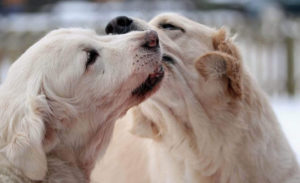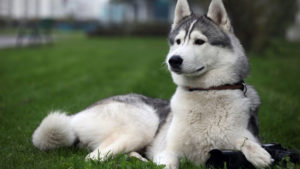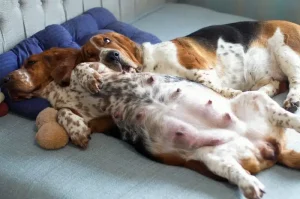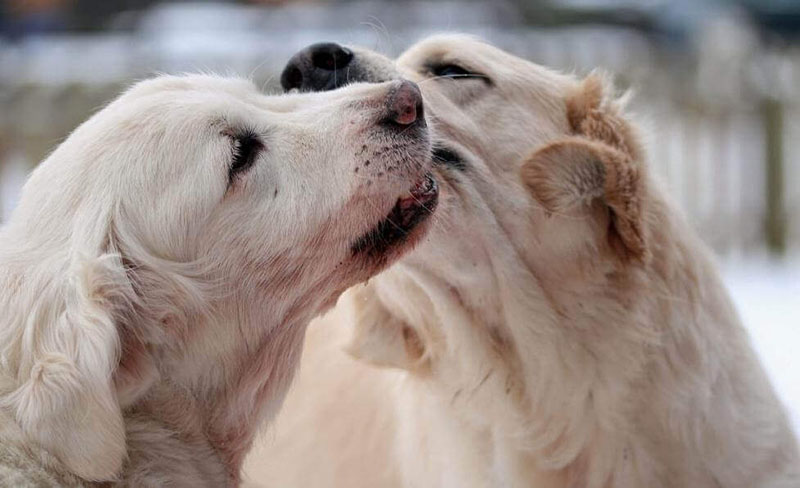
As a responsible dog owner, it’s important to understand and be prepared for your female dog’s heat cycle. This natural reproductive process can bring about various physical and behavioral changes in your furry friend. By knowing what to expect, you can ensure the well-being of your dog and prevent any potential issues. In this comprehensive guide, we’ll walk you through the stages of a dog’s heat cycle, common behaviors and physical signs, how often it occurs, and what you should do to care for your dog during this time.
When Does a Dog Enter Her First Heat?
The age at which a dog enters her first heat cycle can vary depending on breed and individual factors. On average, most dogs will experience their first heat cycle between the ages of six and 15 months. However, it’s important to note that toy breeds may begin as early as four months, while large and giant breeds may not start until they are two years old. It’s essential to be aware of your dog’s breed-specific timeline to anticipate her first heat cycle.
The Four Stages of the Canine Heat Cycle
A dog’s heat cycle consists of four distinct stages, each characterized by specific changes in her body and behavior. Let’s delve into each stage to better understand what happens during a dog’s heat cycle.
1. Proestrus
Proestrus marks the beginning of the heat cycle, during which your dog’s body prepares for mating. This stage typically lasts around nine days. Some common signs of proestrus include:
- Swollen vulva: Your dog’s vulva will appear larger and more prominent than usual.
- Bloody discharge: You may notice a blood-tinged discharge from your dog’s vulva during this stage.
- Excessive licking of the genital area: Your dog may groom her genital region more frequently.
- Clingy behavior: Dogs in proestrus often display increased clinginess towards their owners.
- Aggression towards male dogs: Your dog may become aggressive towards male dogs during this stage.
2. Estrus
Estrus is the mating phase of a dog’s heat cycle and typically lasts for about nine days. During this stage, your female dog will be receptive to male dogs and show signs of readiness to breed. Key behaviors and physical signs of estrus include:
- Increased urination: Your dog may urinate more frequently than usual, leaving scent marks to attract potential mates.
- Change in vaginal discharge: The bloody discharge from proestrus will gradually decrease and may change to a straw color.
- Tail position: Initially, your dog may keep her tail close to her body, but as estrus progresses, she may hold it to the side to signal readiness for mating.
It’s important to note that your dog may exhibit aggression towards other female dogs during estrus while still being welcoming to male dogs.
3. Diestrus
Diestrus follows the estrus stage and acts as a transitional phase. It lasts for approximately 60-90 days and allows the dog’s body to prepare for either a potential pregnancy or a return to normal. During diestrus, you may notice the following changes:
- Return to normal vulva size: Your dog’s vulva will gradually return to its regular size.
- Disappearance of vaginal discharge: The discharge from proestrus and estrus will cease during diestrus.
4. Anestrus
Anestrus is the inactive phase of the heat cycle. During this period, which can last for several months, your dog will not exhibit any hormonal or sexual behaviors. This is a resting phase before the cycle starts again.
Signs Indicating That Your Dog Is in Heat

Being aware of the signs of your dog’s heat cycle is crucial to understanding her behavior and providing appropriate care. Let’s explore common behaviors and physical signs that indicate your dog is in heat.
Common Behaviors of a Female Dog in Heat
During each stage of the heat cycle, your dog may display specific behaviors. These behaviors can vary from dog to dog, but here are some common ones:
- Receptiveness to male dogs: When in estrus, your dog will welcome advances from male dogs and may even allow mounting.
- Agitated or nervous behavior: Dogs in heat can exhibit skittishness or nervousness, especially during the proestrus stage. They may also become aggressive towards other dogs, both male and female.
- Excessive licking of the genital area: A female dog in heat may lick her genital region more than usual.
- Increased urination: Dogs in heat tend to urinate more frequently as a way to communicate their receptiveness to males.
- Change in tail position: Initially, your dog may hold her tail close to her body, but as she enters estrus, she may hold it to the side to signal her availability for mating.
Physical Signs of a Female Dog in Heat
In addition to behavioral changes, there are certain physical signs that indicate your dog is in heat. These signs include:
- Swollen vulva: The opening to your dog’s vagina, known as the vulva, will appear larger and redder than usual.
- Vaginal discharge: During proestrus and estrus, your dog will have a discharge from her vulva. Initially, it may be bloody, but it will gradually change to a straw color.
- Changes in discharge quantity: As the heat cycle progresses, the amount of discharge will decrease.
By observing these signs, you can determine which stage of the heat cycle your dog is experiencing.
Frequency of Heat Cycles in Dogs
Dogs generally have an average of two heat cycles per year, with intervals of approximately six months between cycles. However, it’s important to note that some dogs may have irregular cycles, particularly if they are very young or old. Smaller breeds may experience three heat cycles per year, while larger breeds may only have one cycle every 12 months. Unlike certain species, a dog’s heat cycle is not influenced by seasons, sunlight, or temperature.
Caring for Your Dog During Heat

When your dog is in heat, it’s essential to take certain precautions to ensure her well-being and prevent any unwanted pregnancies. Here are some tips to help you care for your dog during this time:
- Never let your dog out in the yard alone: Male dogs can be extremely persistent in their pursuit of a female in heat. Always supervise your dog when she’s outside to prevent any unwanted encounters.
- Keep your dog on a leash: Even if your dog is well-trained, her recall ability may be compromised by hormonal influences during heat. Keep her on a leash to avoid any unplanned mating.
- Ensure identification tags and microchip information are up-to-date: In case your dog escapes or gets lost, having updated identification tags and microchip information will increase the chances of being reunited with her.
- Watch for signs of illness: Occasionally, dogs may develop health issues after a heat cycle, such as pyometra, a potentially life-threatening uterine infection. If you notice excessive drinking or urination, thick vaginal discharge, decreased appetite, abdominal pain, vomiting, or lethargy, consult your veterinarian immediately.
- Consider spaying your dog after the heat cycle: If you have no plans to breed your dog, spaying her is an effective way to prevent unwanted pregnancies and hormone-related issues. Consult your veterinarian for the appropriate timing of the spaying procedure.
When is the Right Time to Spay Your Dog?
Veterinarians typically recommend spaying female dogs around six months of age to prevent mammary cancer, uterine infections, and other hormone-related issues. However, recent research suggests that large and giant breed dogs may benefit from waiting until they have finished their growth stages to remove the hormones necessary for skeletal development. It’s important to discuss your dog’s specific needs with your veterinarian before making a decision on the appropriate age to spay her.
Frequently Asked Questions
How long does a dog stay in heat?
Dogs are typically in heat for a week-and-a-half to two weeks. The estrus phase, where they are most fertile, can last up to four weeks. However, it’s important to note that your dog will not have bloody discharge or be receptive to mating for the entire heat cycle.
Can a dog get pregnant when not in heat?
No, a dog can only get pregnant when she is in heat. While pregnancy is possible throughout the entire heat cycle, the highest fertility period is usually around a week after estrus begins. It is during this time that you should be especially cautious if you do not want your dog to become pregnant.
How do you keep the house clean when a dog is in heat?
To keep your house clean during your dog’s heat cycle, consider using heat diapers specifically designed for dogs. These diapers will catch the blood and prevent it from staining your furniture or carpets. Additionally, it’s helpful to keep your dog off furniture and carpeted areas or cover them with towels or blankets.
Do female dogs’ personalities change after the first heat?
While a dog’s personality may undergo some changes during her first heat cycle due to hormonal influences, she won’t necessarily become a completely different dog. However, you may notice some puppy-like traits fading as she matures. After her heat cycle ends, any behavioral changes should typically return to normal.
In conclusion, understanding and being prepared for your dog’s heat cycle is crucial for her well-being and your peace of mind as a responsible owner. By recognizing the signs, caring for her appropriately, and considering spaying, you can ensure a smooth and safe journey through this natural reproductive process. Remember to consult your veterinarian for personalized guidance based on your dog’s specific needs.
